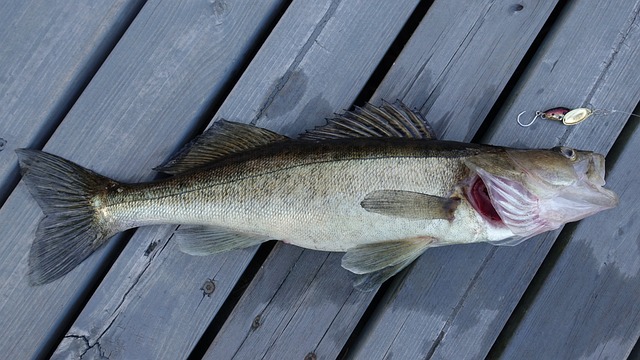Bass fishing is a popular sport enjoyed by millions of people worldwide. It’s no secret that when it comes to catching bass, choosing the right lure can make all the difference. One important aspect to consider is the color of the lure, as it can greatly affect a bass’s willingness to bite. But what color do bass see the best? As an expert angler with many years of experience, I have spent countless hours researching and testing different colors to answer this question.
In this article, I will provide you with expert insight into the colors that bass see best, how to choose the best color for your fishing conditions, and the factors that affect bass perception of color. By the end of this article, you’ll have a better understanding of how to select the right color for your next bass fishing adventure.
Understanding Bass Vision
Before we dive into the best colors for bass fishing, it’s important to understand how bass see. While bass don’t have the sharpest vision, they have adapted to their aquatic environment, and their eyes are designed to detect movement and distinguish between different shades of color.
The anatomy of a bass’s eye is also unique. Unlike humans, bass have a layer of cells called the tapetum lucidum that reflects light and enhances their vision in low-light conditions. Additionally, their eyes are positioned on the sides of their head, allowing them to see in multiple directions at once, which helps them detect prey and avoid predators.
Color plays a crucial role in bass vision. While they can see a wide range of colors, they are most sensitive to shades of green, blue, and red. They also have a hard time distinguishing between some colors, such as green and brown, which can appear similar to them. Understanding how bass see and the role of color in their vision is key to choosing the right lure color.
The Best Colors for Bass Fishing
When it comes to choosing the best color for bass fishing, there are several factors to consider. Generally, natural colors, bright colors, and dark colors tend to be effective for catching bass. Here are the top 3 factors.
- Natural Colors: Natural colors imitate the look of real prey and are a great choice when fishing in clear or lightly stained water. Some examples of natural colors that work well for bass fishing include green pumpkins, watermelons, and brown. These colors blend in with the natural surroundings and can attract bass by mimicking their prey.
- Bright Colors: Bright colors are an excellent choice when fishing in murky or stained water. They provide contrast and can make the lure stand out, which can attract bass. Some examples of bright colors that work well for bass fishing include chartreuse, fluorescent orange, and pink.
- Dark Colors: Dark colors are a great option when fishing in low-light conditions or in deep water. They create a silhouette that can be easily seen by bass, even in dark or murky water. Some examples of dark colors that work well for bass fishing include black, blue, and purple.
It’s essential to remember that the effectiveness of a specific color can vary depending on the time of day, water clarity, and weather conditions. Therefore, it’s crucial to adjust your lure’s color accordingly to increase your chances of catching bass.
Factors That Affect Bass Perception of Color
Several factors can affect a bass’s perception of color, and it’s important to take these into account when selecting the best color for your fishing conditions.
- Water Clarity: Water clarity is one of the most critical factors that can affect a bass’s perception of color. In clear water, bass can see the lure more clearly, and natural colors tend to work better. However, in murky or stained water, bright or dark colors can be more effective since they provide contrast and can be easily seen by the bass.
- Time of Day: The time of day can also affect a bass’s perception of color. During bright daylight hours, natural colors tend to work well since they blend in with the surroundings. In low light conditions, such as early morning or late evening, dark colors can be more effective since they create a silhouette that can be easily seen by the bass.
- Weather Conditions: Weather conditions can also impact a bass’s perception of color. On cloudy or overcast days, bright colors can be more effective since they provide contrast and can be easily seen by the bass. On sunny days, natural colors tend to work better since they blend in with the surroundings. Additionally, during periods of rain or when the water is choppy, dark colors can be more effective since they create a more visible silhouette.
Always remember to experiment with different colors until you find the one that works best for your specific situation.
Conclusion
Choosing the right color for bass fishing can be a critical factor in determining your success. As we’ve discussed, natural colors, bright colors, and dark colors tend to be effective for catching bass, but it’s essential to consider other factors such as water clarity, time of day, and weather conditions that can impact a bass’s perception of color.
As an expert angler with years of experience, I’ve learned that the best color for bass fishing can vary depending on the situation. That’s why it’s crucial to experiment with different colors and pay attention to how bass respond to them. By doing so, you’ll be able to select the best color for your specific fishing conditions and increase your chances of catching more bass.
Remember, understanding how bass see and the role of color in their vision is key to choosing the right lure color. By following the tips and advice provided in this article, you’ll be on your way to becoming a more successful bass angler. Tight lines and good luck out on the water!









